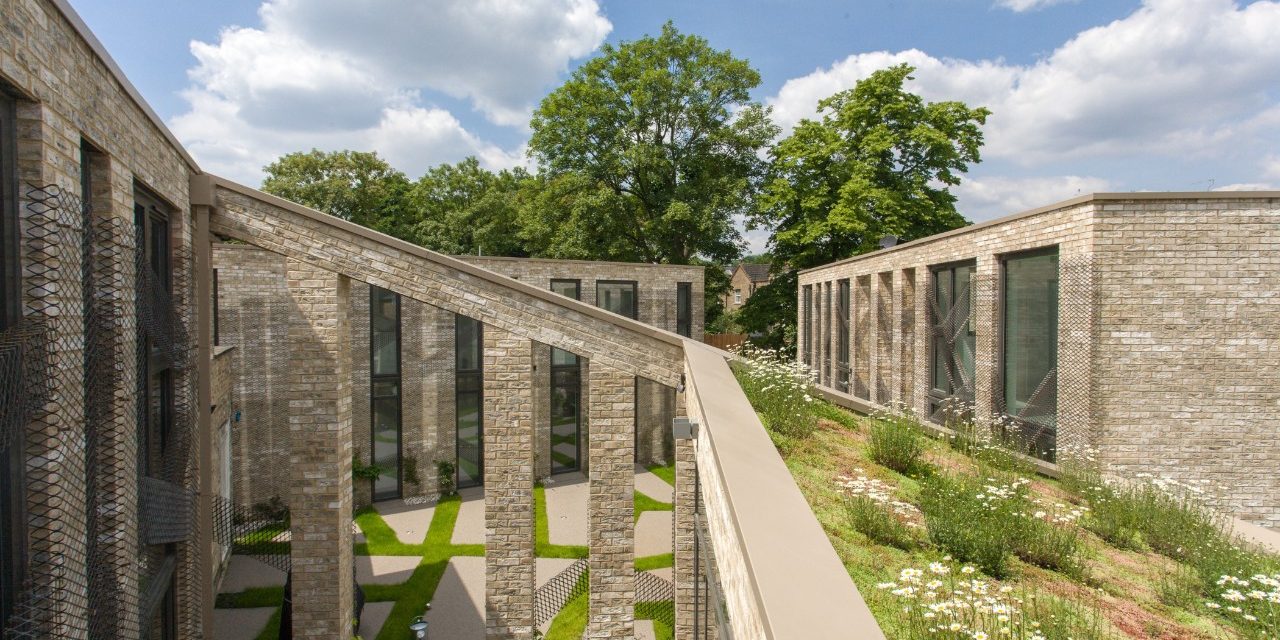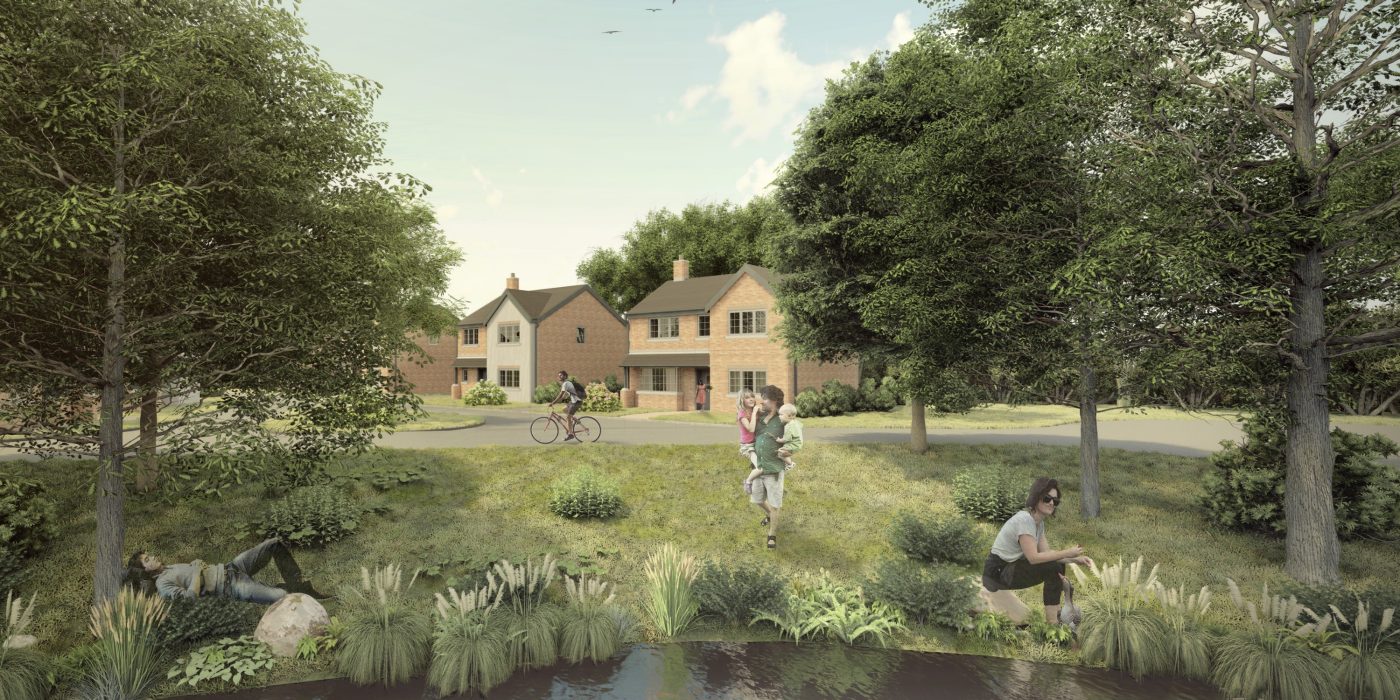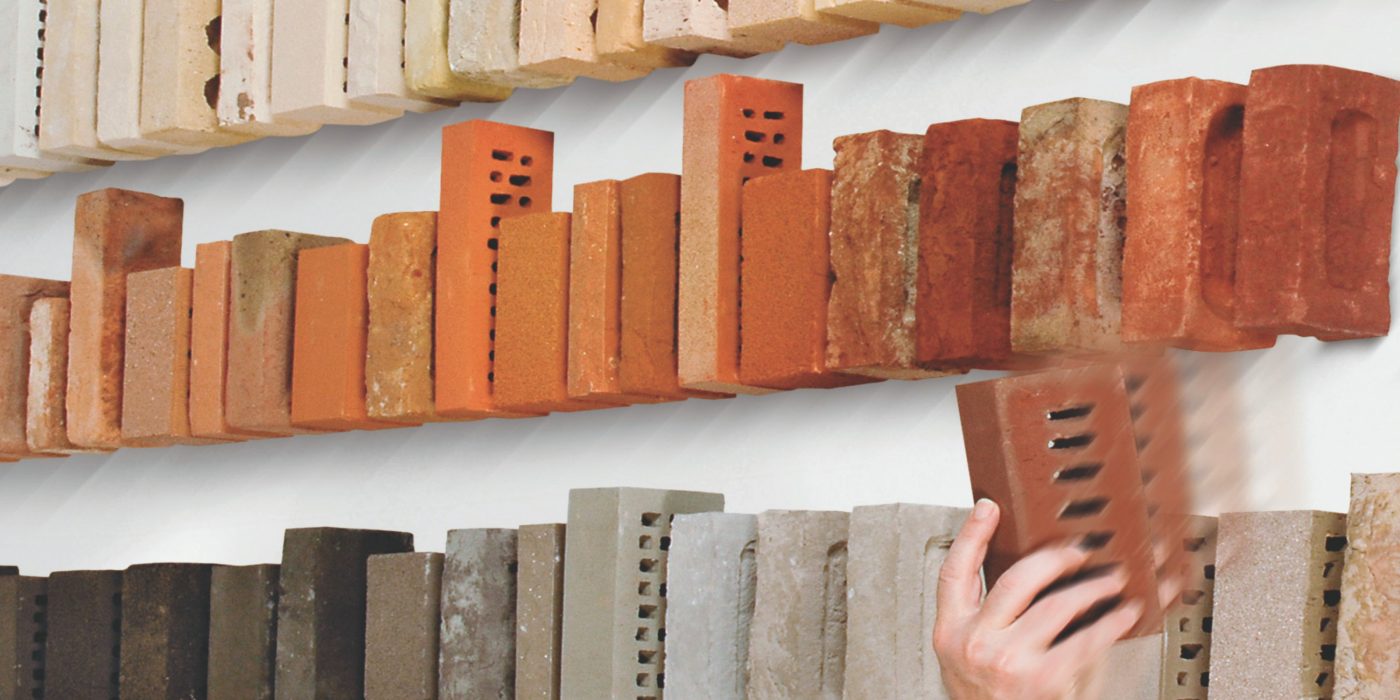Ceri Turner-Hill, Senior Architect in Wienerberger’s Technical and Design Services team, talks us through the principles of net-zero carbon building and how architects can rise to the challenge of decarbonisation.
The whole architecture, engineering, and construction (AEC) industry needs to work together to help combat the climate crisis. Architects in particular must continually aim to improve the energy efficiency of buildings and find innovative ways to do so. That’s why more architects are exploring and adopting a net-zero building approach.
What is Net Zero building?
“There are several definitions in circulation, we use the WorldGBC (2021) definition for net-zero whole life carbon, in which emissions are broken down into three elements: upfront carbon, operational carbon, and embodied carbon,” explains Ceri Turner-Hill, Senior Architect at Wienerberger UK.
Upfront carbon relates to the total carbon emissions produced in the production and construction process stages of a building lifecycle, including emissions from raw material supply, manufacturing, transportation, and construction or installation of a building.
Operational carbon refers to the carbon emissions associated with energy used to light, heat, cool, and power a building. This is measured on an annual basis to account for fluctuations in demand across the seasons.
Embodied carbon emissions are those associated with materials and construction processes used throughout the whole lifecycle of a building. It includes in-use maintenance, repair, replacement and refurbishment.
The concept of ‘net-zero’ is incorporated across the upfront, operational and embodied carbon elements when emissions are reduced as much as possible, then any residual emissions that remain unfeasible to eliminate should be neutralised through carbon removals.
“The carbon removals are generally achieved through the use of offsetting programmes, which can be nature-based solutions such as forestry conservation or technologically-mediated processes, as long as carbon is stored,” says Ceri. “Fundamentally, architects should consider upfront, operational and embodied emissions holistically, in order to ensure emissions are reduced over the whole lifecycle of the building.”
How can architects adopt a Net Zero approach?
“Our approach to a net-zero carbon construction is to reduce upfront embodied carbon and promote natural products with reduced embodied carbon wherever possible,” says Ceri. “To minimise operational emissions in the design stage, we adopt Fabric First principles combined with passive ventilation systems and renewable energy generation such as heatpumps, working closely with M&E consultants throughout. Together, this ensures a high performing external envelope, efficiently conditioned and heated using passive and renewable sources.”
Choosing the right materials for the project is essential, Ceri explains, and architects need to talk to product manufacturers to identify the best solution for each project: “I’d recommend talking to manufacturers to establish whether the products would be suitable and applicable for use in a net-zero carbon building.”
Is net-zero carbon building the same as building sustainably?
“The word ‘sustainability’ is usually associated with renewable energy and/or environmental design,” says Ceri, “But ultimately, net-zero carbon emissions is just one element of sustainable building. Alongside environmental aspects, there are also social aspects to consider. For example, social aspects include human rights in supply chains and occupant wellbeing during use.”
Regarding environmental sustainability, the industry is undergoing significant change, with building regulations evolving to ensure the fabric of each new building performs to a far higher standard, requiring less energy (and ultimately costs) to heat the internal spaces. Alternative heating systems are now becoming increasingly more mainstream, such as air source and ground source heat pumps, which provide consistent low-temperature heating throughout the year without any need for natural gas.
“Economic and social sustainability are just as important. When designing, we need to ensure that buildings are not necessitating excessive value engineering exercises due to lack of financial consideration in the early stages, or simply designed out of cultural context entirely. Unfortunately, this does still happen, and can be seen throughout the country in all sectors of design.
“Therefore, I would say that pursuing net-zero carbon emissions is a vital and integral part of building sustainably, but there are other factors for architects to consider.”
How is Wienerberger helping its customers achieve net-zero building?
“Bricks require a large amount of energy to produce, in order to reach the high temperature needed to turn clay into ceramic,” says Ceri. “Ceramic products have a significant amount of embodied carbon, but Wienerberger is investing in initiatives to tackle that. We’re looking at ways to optimise the production process, use raw materials more efficiently, and ultimately reduce the carbon emissions associated with brick through innovation.
“Although there’s a lot of energy used upfront in the production process, when bricks are specified appropriately with building longevity in mind, bricks can help to reduce a building’s embodied carbon per year of service life due to their +150 year lifespan and low maintenance requirements, when compared to other building materials.”
Wienerberger’s Porotherm block walling system can also help architects design for net-zero carbon emissions, with a minimal departure from traditional favoured masonry construction.
“Porotherm cellular clay blocks can be used to replace traditional dense concrete blockwork structural inner leaves, which can immediately reduce carbon impact. Standard widths of 100mm and 140mm are available to avoid increasing wall buildups, and considering the thermal benefits of a cellular block, also benefits the performance of the envelope,” says Ceri. “We are currently looking to use monolithic wall systems on residential projects in this country, which would be an excellent use of the products we currently have and are used extensively on the continent with excellent results.
“By using a suitably specified monolithic Porotherm block, rendered and lined, we can reasonably expect to meet current part L1A U-Value requirements without any use of insulation or concrete. Simply, the removal of insulation avoids the use of petrochemical components, and the removal of concrete avoids a huge amount embodied carbon. A single monolithic block wall can be used as a Class A1, structural, acoustic, and thermal wall which will also save time on site through the reduction of additional required components.”
To find out more about net-zero carbon emission building, read about how bricks can be used to build sustainably, what it means to design a ‘healthy building’, or read more about Wienerberger’s Sustainability Strategy, as we strive to become a net-zero carbon, nature-positive business.



